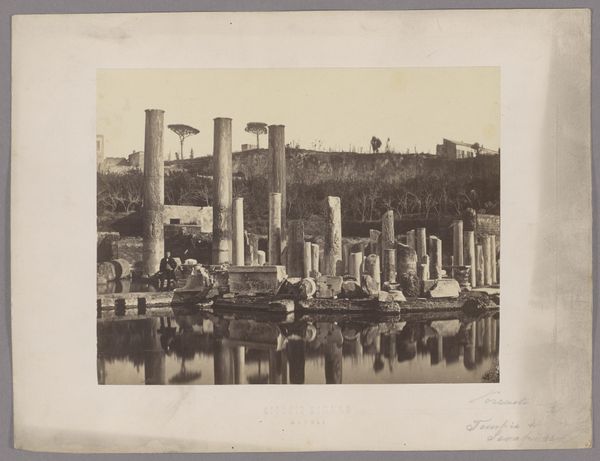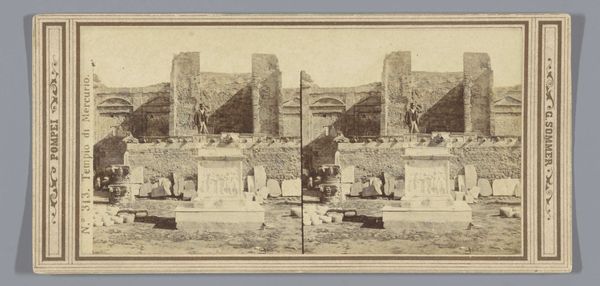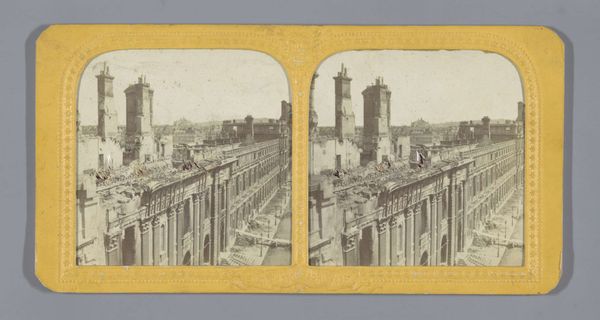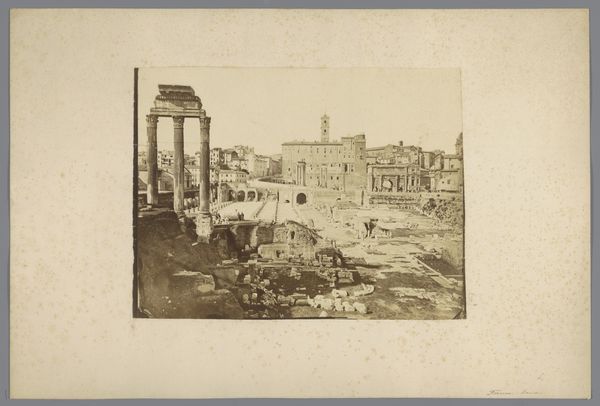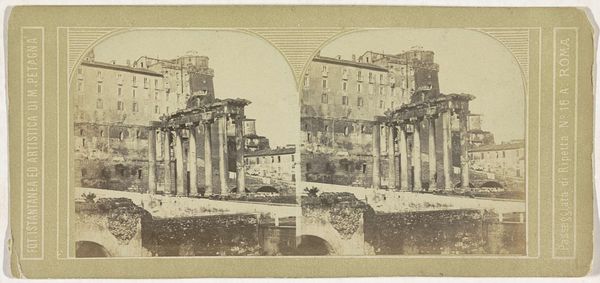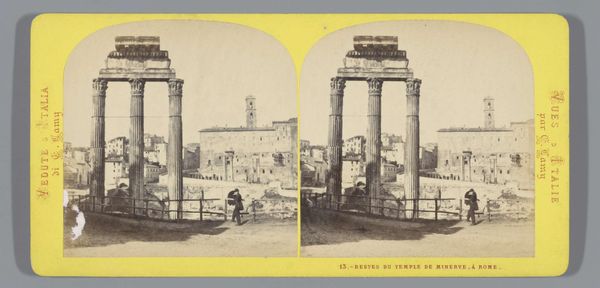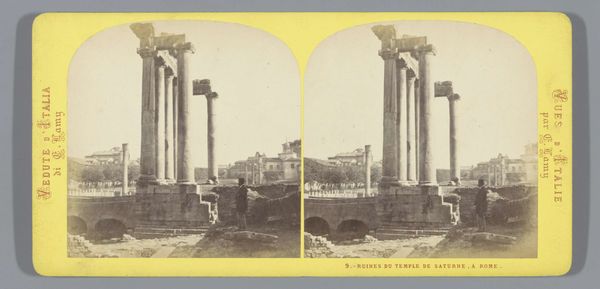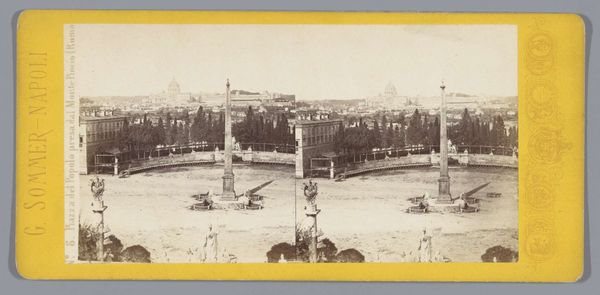
Dimensions: height 84 mm, width 171 mm
Copyright: Rijks Museum: Open Domain
Curator: I’m struck by the composition, almost cinematic. The foreground columns provide a strong vertical structure that draws your eye across the expanse of water to the ruined architecture beyond. Editor: Indeed, and speaking of ruins, what we have here is Giorgio Sommer’s gelatin-silver print, "View of the Ruins of the Macellum of Pozzuoli", dating from somewhere around 1860 to 1880. It's currently held here at the Rijksmuseum. I think what's vital to acknowledge is how this ruin came to signify the shifting geopolitical power dynamics in the region and particularly the experience of colonial dispossession for Italian peasants under Bourbon rule. The Roman marketplace becoming a site of disease due to lowered sea levels became, for locals, a tragic parable of dispossession by disease. Curator: An interesting reading. I'm still focused on how the monochrome adds to this piece's aura of melancholic grandeur. The water's reflective surface doubles the architectural forms, and makes for interesting patterns that suggest both reality and a ghostly, ethereal dimension. Sommer uses a strong diagonal composition and various gradations to evoke depth and a sense of vastness despite the relatively small format. Editor: Precisely. But this isn’t simply about aesthetics. Let's remember that Sommer was photographing a very real, materially present site with particular connotations and impact in local economies. What about this view speaks to the conditions of Southern Italian workers at that time, or those in Naples navigating the uneven terrain of national unification? Curator: I concede your point, and find a persuasive argument. This intersection of history and environmental precarity is compelling to consider and highlights how photography served not just as documentation, but also as a carrier of cultural narratives. Editor: It brings another dimension to our understanding. And, ultimately, perhaps our differing perspectives offer a richer tapestry. This photograph now echoes not just through aesthetics, but with political consciousness. Curator: Perhaps you've offered a reminder to be mindful that behind the play of light and shadow lies social stratification and even struggle.
Comments
No comments
Be the first to comment and join the conversation on the ultimate creative platform.

